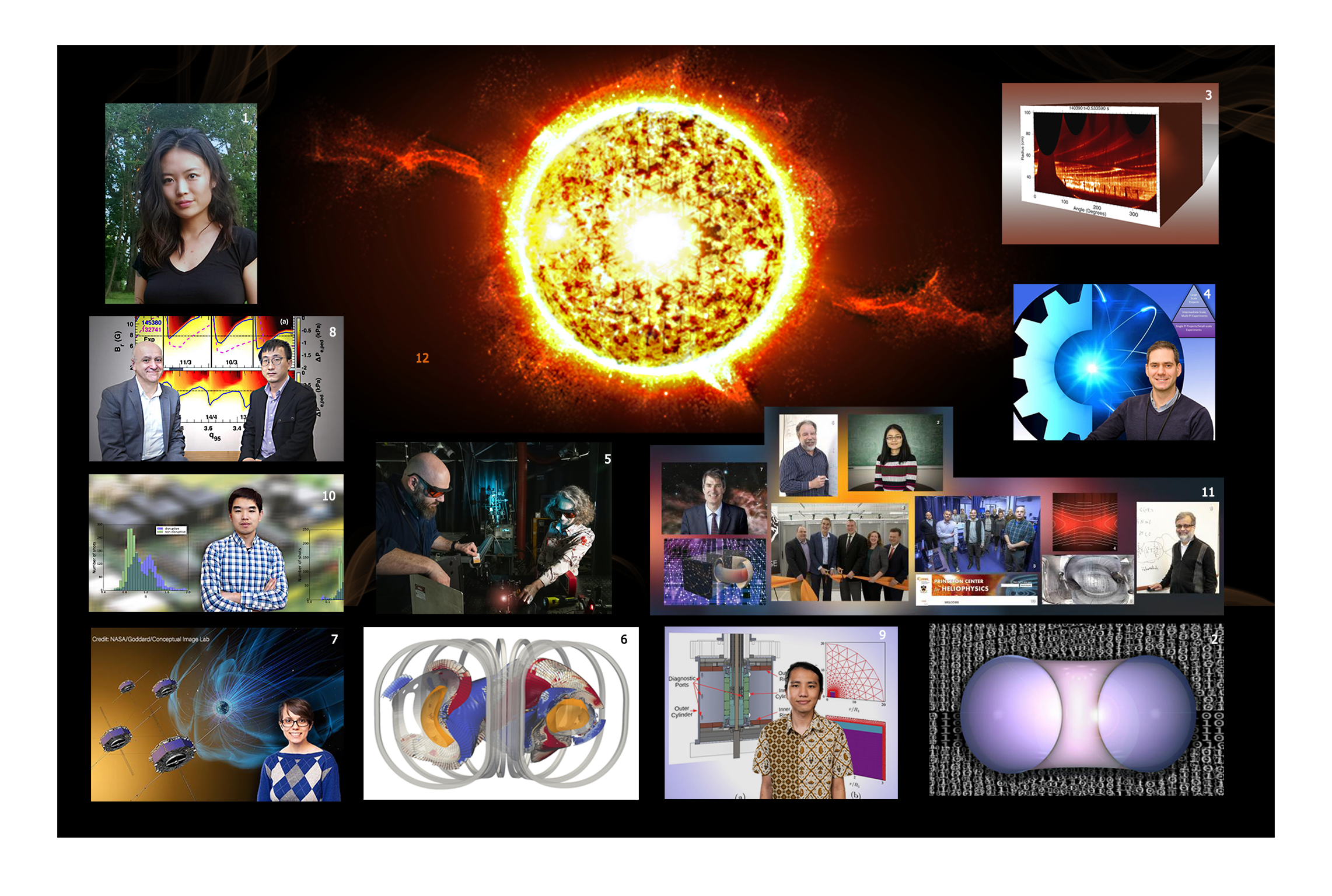Radiation therapy for troublesome bubbles. New model modifies the standard method for stabilizing disruptive bubbles in plasmas that fuel fusion reactions.
Responding to goofs. PPPL scientists develop novel method for forecasting how fusion facilities can bounce back from debilitating errors.
Beware the blob. Surprising correlation found between turbulent blobs and fluctuations in the magnetic field that confines the plasma that fuels fusion reactions.
Bright day dawning. U.S. fusion scientists and engineers call for rapid construction of a fusion pilot plant to produce electricity.
Aim high, think low. National venture formed by PPPL and Princeton University delivers access to world-class research facilities to develop low temperature plasma for innovative industrial uses.
New role for fridge-like permanent magnets. PPPL developing use of far more powerful magnets to simplify the design and construction of stellarator fusion facilities.
Alert! Here come solar storms! Graduate student at PPPL produces findings that could improve forecasts of solar blasts that can disrupt cell phone service and power grids on earth.
Heat blasts be gone. Scientist create model for forecasting how to eliminate sudden blasts of heat and particles that can damage fusion facilities.
Mimicking the creation of stars and planets. Novel device at PPPL models the production of heavenly bodies from cosmic dust
Artificial intelligence to the rescue. PPPL develops the AI machine-learning process to foresee and avoid the disruption of fusion plasmas.
What a decade! A collection of PPPL highlights in fusion and plasma physics over the past 10 years.
Fusion’s hot moment.(link is external) Read the Andlinger Center of Princeton University’s explorations of fusion energy with interviews with PPPL Director Steve Cowley and Laboratory physicist Egemen Kolemen.
PPPL, on Princeton University’s Forrestal Campus in Plainsboro, N.J., is devoted to creating new knowledge about the physics of plasmas — ultra-hot, charged gases — and to developing practical solutions for the creation of fusion energy. The Laboratory is managed by the University for the U.S. Department of Energy’s Office of Science, which is the single largest supporter of basic research in the physical sciences in the United States and is working to address some of the most pressing challenges of our time. For more information, visit energy.gov/science.



